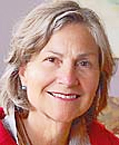LAST AUGUST 30 the Mendocino County Sheriff’s Department issued the following press release with a certain amount of local hoopla:
ON AUGUST 30, 2012 Mendocino County Sheriffs Deputies were dispatched to the area of the “North Pass Fire complex” in Covelo regarding a firefighter that had been threatened with a firearm.
Upon arrival deputies contacted a CalFire Firefighter that reported he was on a vacant lot of land, in the “Blands Cove” area, involved in fire suppression duties and documenting fire damage, when he came across a small marijuana garden. The firefighter, who was driving a marked CalFire vehicle and wearing firefighter protection gear, ignored the marijuana garden and proceeded with fire suppression efforts. (It should be noted that this area was clearly marked and identified as a mandatory evacuation area due to the aggressive fire behavior and ongoing fire suppression efforts.)
As the firefighter was continuing with fire suppression efforts, he noticed a vehicle drive up to his location. The vehicle approached him and pulled up next to him. The male subject inside the vehicle told the Firefighter that he needed to leave the area. When the firefighter attempted to explain to the subject that he was engaged in fire suppression activity, the male subject told him that he needed to leave immediately. The subject then looked down at an object that was between his legs on the floor board of the vehicle. As the firefighter looked into the vehicle he could see that a shotgun was between the subject’s legs, and that the barrel was pointed directly at him. In fear for his life, the firefighter left the area immediately. Following a search of the area, deputies located a residence (located within the mandatory evacuation area) and the possible suspect vehicle. Deputies contacted a male subject at the residence who admitted to confronting the CalFire Firefighter. In addition, the male subject, later identified as Veda Bennett-Swank, admitted that he was growing marijuana and that he was aware that he was remaining in a mandatory fire evacuation area.
Veda Bennett-Swank was arrested for brandishing a firearm in a rude, angry or threatening manner, interfering with emergency personnel or a firefighter at a fire and criminal threats. He is currently being held at the Mendocino County jail on $20,000.00 bail.
![Bennett-SwankBooking]() * * *
* * *
YESTERDAY, Mr. Bennett-Swank’s mother, Lisa Wrench, after saying she was having trouble posting her response to the months-old Press Release on the Sheriff’s website, posted the following response on Hank Sims’ Lost Coast Outpost in Humboldt County. But, of course, the incident in question involves Mendocino County authorities so we’re reprinting Ms. Wrench’s response here. (Courtesy LostCoastOutpost.com)
* * *
Editor,
Veda Bennett-Swank is my son. I would like to comment on the situation regarding his arrest for supposedly threatening a fire person or brandishing a weapon at him. The DA actually wants to take this to trial.
To understand the situation it’s important to note that the Swank family property is located about 15 miles from Covelo, where the average homestead is about 200 acres and there are maybe five homes in two miles. It’s remote, far from services, and you are going to have to take care of yourself, rather than rely on police to protect you, who would probably take 45 minutes to arrive at best. The Swanks have owned their property over 20 years, and are improving it as a family homestead and eventually want to build a home and live full time there.
The area is home to bears, mountain lions, rattlesnakes, coyotes, and “Cinnamon Bears” (relocated Grizzly bears) are known to be in the area. Most residents own and carry guns when they are out on the land to protect themselves.
Residents in the Northern California wilderness areas also have to constantly be on alert for threats from humans. Numerous incidents of gangs trying to set up huge illegal pot operations on someone’s land, steal their belongings, criminals trying to rob them if they are pot farmers during harvest time, and scary folks who come deep into the wilderness to put up a “quick meth lab” which can destroy the land permanently or cause fires, are common problems.
During the fire, there were numerous criminals working off their sentences fighting the fires with the firefighters who were within a few miles of the Swank property. The Swank family experienced multiple thefts of thousands of dollars of tools and personal belongings at their property around this time and were concerned about looters or criminals returning to the area after the fire.
This event took place many days after the fires were out, in an area a long way from the affected fire area, on private property. A white truck, with no placards, signs or other identifying information, was on the property near the small, legally operated marijuana garden on the Swank family land. A man in unremarkable clothing with no badge or other identifying clothing, was standing inside the small, fenced, legal pot garden, snapping pictures of the plants with a camera.
The report says the individual was engaged in “fire suppression efforts.” In reality, his behavior consisted of being inside the small pot garden in question. His “fire suppression equipment” consisted of a photographic camera.
Veda told the person that he was trespassing and should leave immediately. The man got in the white truck, waved goodbye, and left. I don’t know whether Veda was “rude” to the man about him being deep into his garden with a camera or not. But I might have been less than polite if a person claimed to have a right to be doing this on my land, and used his government authority to assert his right to do so.
As to how this gets twisted into a story about a firearm, as the man drove away, he noticed that Veda had a firearm in his truck with him.
Veda is a truthful person, and told the police he had a firearm in his vehicle. This is very common in this area as a precaution against meeting large animals or criminals who may be on your land.
I worry myself for anyone who legally is growing during the time close to harvest due to the risk of being robbed and potentially harmed. I myself own land inside forest boundaries and while I do not choose t to grow marijuana, I am always concerned about my safety when there are individuals who are on my property without a right to be there.
As I said before, many people show up in the late summer to rob pot farmers in the wilderness areas of California, or hunt on private land, or worse, are looking to find a secluded spot to set up a quick meth lab or do other criminal behavior. These types of individuals are likely to be carrying weapons should you come upon them.
I don’t think it’s rude or threatening to tell someone who is pointing a camera at a pot plant inside a fenced garden that they need to leave and don’t belong there.
I’ve known Veda all of his 21 years, and I know that he would never intentionally harm anyone who was not at that moment threatening his own life or that of a loved one. He is a very gentle and peaceful young man. I don’t agree that babysitting pot gardens is the best use of his time, but he is committed to living on the Swank family land, and I admire and respect him living his dream to live in this rural way.
Having a weapon in your vehicle in case the other person is a criminal is prudent in the very wild hills outside of Covelo.
The firefighter clearly admits that what happened is that he was told he was trespassing and that he saw a weapon in the car down at the floorboards of the car. I truly believe that this is a horrible abuse of government power to try to claim you were harassed or threatened. To be walking around in someone’s legal pot garden, however small and modest, in the Mendocino Hills, snapping pictures, is an abuse of your position as a Civil Servant.
Veda and the other members of the Swank family suffered significant losses due to thefts during the fires, as well as the tremendous sums defending himself against these unfair charges. I truly believe that Mendocino County residents’ tax dollars are much better spent prosecuting illegal growers, gang drug activities and violent crimes.
That being said, I want to thank all of the brave individuals who fought the fires this year.
Lisa Wrench, Covelo
========================================================
SUPERVISOR HAMBURG has filed a claim against the County of Mendocino. We know he’s poised to sue the county to compel the county to issue him a death certificate for his already interred wife, but a claim implies damages.
========================================================
LAST THURSDAY we posted the following items (being reposted here for convenience). We’re also posting the original story on the Elliot trial and the story about the attempt at a retrial because it has now been appealed on the ground PD Thompson made a trial error.
* * *
DEPARTMENT OF UNINTENTIONAL HUMOR (then again, maybe it wasn’t unintentional) in Tiffany Revelle’s lead story in Wednesday’s Ukiah Daily Journal “At issue: Did Mendocino County Public Defender Linda Thompson make a mistake?”
I’D SAY THE ODDS that Thompson made a mistake are about 99-1 she did, but if she did in this one it seems big-time moot anyway. It boils down to the length of a knife blade. Will Timothy Slade Elliott of Hopland, convicted in 2010 of second-degree murder for the 2008 stabbing death of Samuel Billy, 29, also of Hopland, get a new trial?
SHOULD THOMPSON have asked for “a hearing outside the jury’s presence to exclude the 1.65-inch knife a doctor testified could have been used to inflict the fatal, 6-inch stab wound in Billy’s abdomen.” The dispute is about the length of the knife blade; was the one Elliott allegedly used on Billy long enough to penetrate deep enough to kill Billy?
MS. REVELLE’S STORY has it this way: “‘At trial, I was asked for my opinion of fellow pathologist Dr. Terri Haddix’s conclusion that the knife in evidence could not, when fully inserted, inflict a six-inch deep wound,’ according to an April 7, 2012 declaration from Dr. Jason Trent, the pathologist who performed the autopsy on Billy. I testified to my belief that her conclusion was incorrect. My opinion was based, as I stated at trial, on the knife blade measuring between three to four inches long. Based on this information, I am not absolutely able to conclude whether this knife could have caused a six-inch deep wound. If I was told at trial that the knife blade was 1.65 inches long, I probably would have testified that this knife could not cause a six-inch deep wound. However, keep in mind that the victim is dressed, is overweight and the blade strikes no object other than soft tissue.”
THAT GRIM EPISODE occurred late at night on the Hopland rez, with the only eyewitness being a 9-year-old boy whose long distance view of the stabbing Thompson was unable to shake. A jury had no difficulty convicting Elliott whatever the length of the blade he used or didn’t use.
* * *
ON FRIDAY Ms. Revelle reported:
Public defender reacts to criticism in Hopland murder case
Mendocino County Public Defender Linda Thompson on Wednesday responded to claims that she erred in failing to exclude the alleged murder weapon in the 2010 trial of Timothy Slade Elliott for the stabbing death of Samuel Brandon Billy. “I still think he’s innocent,” Thompson said, amid her comments about the fact that the doctor who testified about the weapon at trial recanted his testimony a year ago. A jury in August 2010 convicted Elliott, now 40, of second-degree murder in the September 2008 stabbing of Samuel Brandon Billy, 29. The men, both Hopland residents, allegedly fought at a party on land belonging to the Hopland Band of Pomo Indians early on the morning of Sept. 26, the Mendocino County District Attorney’s Office stated previously. Elliott was reportedly seen delivering a blow to Billy’s abdomen, and Billy staggered a few feet and collapsed in the parking lot with a stab wound. Elliott may get a retrial if judge Ann Moorman rules in favor of the state appellate court’s petition, which claims that Thompson was ineffective counsel because, in part, she didn’t ask for a hearing outside the jury’s presence to exclude the 1.65-inch knife the prosecution’s medical expert testified could have been used to inflict the fatal, 6-inch deep stab wound in Billy’s abdomen. Dr. Jason Trent, the forensic pathologist on contract for Mendocino and Lake counties for the past 15 years, recanted the testimony he gave at trial that the knife in question could have been the murder weapon, according to a declaration he filed with the First District Appellate Court in April 2012. “I’m surprised that the ME (medical expert for the Mendocino County Sheriff’s Office) has decided to do that several months after the fact,” Thompson said. Trent claims in his declaration that he didn’t know during the trial that the knife was only 1.65 inches long, and that if he had known, “I probably would have testified that this knife could not cause a six-inch deep wound.” Trent’s original testimony disagreed with Dr. Terri Haddix’s conclusion that the knife in question could not have caused the fatal stab wound. Thompson said she put Haddix on the witness stand to testify that the knife was only 1.65 inches long, and contends that Trent had Haddix’s report and knew how long the knife was, “and still stuck to his guns.” She didn’t file a motion to exclude the knife because the dispute over whether the knife could have caused Billy’s stab wound was already on the record. “That would be a factual dispute — when one doctor says it could have inflicted the wound and one doctor says it couldn’t — that’s an issue for a jury,” Thompson said. She added, “I hope the county reconsiders Dr. Trent’s role as ME.”
* * *
BY WAY OF BACKGROUND, in September of 2010, the AVA’s crack court reporter covered the Elliott case in detail. So to help understand the issues involved we’re reprinting that story.
* * *
MOTION DENIED
The Good People And The Snow Bunnies Put Another Indian Away For Life
by Bruce McEwen
![Timothy 'Coke' Elliott]()
Timothy ‘Coke’ Elliott
Despite the fact that the prosecution didn’t have a very tight case against him, Timothy S.‘Coke’ Elliott was found guilty of Second Degree Murder last week at the end of a two-week trial that was attended throughout by many members of the Hopland band of Pomo Indians from the Hopland Rancheria. Samuel Billy, 29, was found lying with a knife wound in the early morning hours of September 26, 2008. Billy, who had been a basketball star at Ukiah High School ten years ago, died on the operating table in Santa Rosa later that day.
Tim Elliott is facing 16 years to life in prison.
The main witness in the case was just a seven year old kid at the time, and the presumed murder weapon, little more than a toy. Yet the jury came back with a guilty verdict last Friday after only two days of deliberation.
Elliott’s lawyer, Public Defender Linda Thompson, made a motion for acquittal early on for lack of evidence, and after all the evidence was in she made the motion again, but both times Judge Richard Henderson stamped it “Denied.”
Judge Henderson has long been considered a rubberstamp for the District Attorney’s Office. “Ricky Rubberstamp,” the local defense bar has labeled him.
The knife in question was less than two inches long, handle included, and the stab wound Sam Billy died from was over six inches deep. The crime scene had been “contaminated” by numerous people coming and going, and the investigation was stonewalled from the beginning by a close-knit community that doesn’t seem to have much faith in “white-man’s justice.”
The case was assigned to Detective Andrew Whittaker who said he was “met with a lot of resistance; people were being very uncooperative.”
Detective Whittaker eventually found the kid, Isaiah Valesquez, seven years old at the time, who said he saw the defendant, “Coke,” “punch” the victim, Sam Billy, at around 3:30am after or during an on-going party in the parking lot of an apartment complex at the end of Shanel Drive on the Hopland Rancheria. Apparently, it was Coke’s birthday party. Isaiah’s testimony was in last week’s report. He’s now a nine-year-old.
Since Isaiah testified, a recording of his interview with Detective Burns, who also worked on the investigation, was played for the jury. The recording was played as a defense exhibit because of some “inconsistencies” in the two year old recorded version and the testimony on the witness stand last week.
In the recording, the jury heard the highly keyed-up voice of a younger, more exuberant Isaiah Vasquez. He tells Detective Burns that he’s in Third Grade at the Hopland Elementary School and likes reading.
Burns: “What kind of books?”
Isaiah: “Chapter books. And Pokeman!”
Burns: “What kind of grades do you get?”
Isaiah: “Ummm… good. I get good grades in school. Very good grades.”
Burns: “Do they grade you with As and Bs or percents?”
Isaiah: “Percents!”
Burns: “So what grades did you get?”
Isaiah: “A hundred!”
Burns: “Good for you! I was here the other night” — several days had gone by since the night of the knifing, and a few more since Burns had first met Isaiah, but he knows why the detective has returned.
Isaiah: “Do you want me to tell the story?” he asks with impatient enthusiasm.
Burns: “Yeah, sure, if you can remember it.”
Isaiah: “I saw Coke and Sam outside talking, then Coke was punching Sam in the stomach and Sam was holding his stomach, then Sam fell down in the road. Then Coke ran to Jessica’s house.”
Burns: “So you were upstairs in your bedroom?”
Isaiah: “Yeah, uh-huh. I was watching a movie!”
Burns: “What movie?”
Isaiah: “It was the Snow Bunnies.”
Burns: “Do you know what time it was?”
Isaiah: “Oh, yeah. It was 11 o’clock.”
Burns: “How did you know it was 11?”
Isaiah: ‘Cause I saw it was 11 on the microwave.”
Burns: “Were there police and deputies there?”
Isaiah: “Yeah, there were police officers and deputies too.”
Burns: “Okay, here’s what we need to do, Isaiah. We have lots of time—”
Isaiah: “Could you wait while I use the bathroom? You make me kind of nervous.”
Isaiah’s siblings can be heard in the background of the recording and while he’s absent, his mother says something to the detective, but it was hard to hear just what she said. Something about his movie being too loud, perhaps. Shortly, he returns. A racer coming out of a pit-stop, hoping to make up lost time.
Burns: “So you were sleeping and then you woke up.”
Isaiah: “Yeah, I woke up and my movie was still on. Then my Mom and Dad woke up because I turned my movie up – wait! I got stuck – Where was I? And then – and then – there were lots of people out there. And then – then, someone threw someone against that car! My Mom and Dad were talking and I said, ‘That’s Sam out there!’ My Mom took a towel and a cup of water out there – then Sam’s brother was there and he said, ‘come back, you cowards’ – then he gave Sam CPR. Then lots of cops came, and firefighters. There were lots of people there.”
Burns: “Did you see all that from your bedroom?”
Isaiah: “Yep.”
Burns: “Let’s back up.” The voice of detective Burns sounds like he was choking on Isaiah’s dust as the kid raced to a conclusion. “Tell me again what it was you saw from your window.”
Isaiah: “But, well, then, Sam’s older brother, Derek—“
Burns: “You gotta pull your hand away from your mouth, ‘cause I can’t really hear you.” The detective is perhaps more concerned with the quality of the recording than his hearing.
Isaiah: “Then Coke said, ‘Look at your man, he’s fading.”
So far, this line and the part about seeing the punch to the stomach, were the only things the seven-year-old could agree to with the nine-year-old. But seven-year-old Isaiah adds this, with an air of candor in his sigh: “I couldn’t really hear what they were saying, ‘cause of my TV. But then Coke was moving up. Coke had on a white shirt. But Coke was drunk and Sam wasn’t. But then I saw Coke beat up some other guys.”
Burns was choking on more dust: “I can’t keep up with that,” he gasped.
But what’s worse, is nine-year-old Isaiah had said Sam was drunk.
Isaiah let up on the throttle, took a breath, shifted down and floored it: “Coke said, ‘Lookit, your boy’s fadin’ to Sam, but Sam… Then the good people went to check out Sam!”
One wonders, at this point, if the Good People are any kin to the Snow Bunnies. Isaiah is sniffling and coughing, occasionally, like maybe he has a cold, which would explain why he had his hand to his mouth earlier. His mother, perhaps interrupting to hand him a tissue, says, “Don’t get confused.” The victim was her “friend,” in Isaiah’s words.
Burns: “What happened next?”
Isaiah: “I think I just forgot,” he sniffed. “Sam wasn’t, uhh …? And Coke said, ‘I’m gonna take you down, dude. Then Derek thought Coke was going to do the uppercut to Derek but he did it to Sam. He did this” – there’s some rustling noise on the recording as if Isaiah were shadow-boxing – “and then he did that, then Derek was doing CPR to Sam like this, then like that (more rustling noises), but it wouldn’t work.”
Burns: “Did you see any weapons?”
Isaiah: “Nope. Nobody had any weapons,” he said with resolute authority.
Burns: “You did really good.”
At this point Dr. Trent, the County’s forensic medic who did the autopsy, came in. He was running late from the Crime Lab in Eureka and I had to catch the bus. On the ride home, out of idle curiosity, I glossed the word: Autopsy is Latin, meaning “see for yourself.”
Isaiah the younger had made a storyteller out of Isaiah the older, it seemed. The Defense had been given a copy of this two year old recording, so it’s easy to imagine how startled Linda Thompson was with the “inconsistencies.”
The defendant, Tim Elliott, sat with his immobile back to the gallery throughout, his head erect, his long braids behind his ears, except rising to stand in courtesy and dignity when the jury came and went.
When Ms. Thompson cross-examined Isaiah two weeks ago – before the jury had heard the recording – she may have sounded combative and insensitive. Little did the jury know at the time how glaring the inconsistencies were; but, no matter. The consensus around the courthouse is that once you attack a child, you’ve lost the jury’s sympathy. Attack is too strong a word, but, still, it seems Ms. Thompson pressed too hard. Especially, perhaps, for the eight women on the jury.
The prosecutor, perhaps significantly, was Deputy DA Rayburn Killion, known by all the women as the courthouse “The Hunk!” He’s a tall young man, superbly fit and rather stylish in his sharp pinstripes with a shaved dome and bristly goatee. Women – the ones who aren’t studiously consulting their cellphones in order to keep their eyes off him — stop in their tracks and catch their breath when he strides past.
Killion had another witness, a man whose reluctance to testify was in stark contrast to Isaiah’s eagerness. His name was Patrick Zaste, as near as I could tell, because his voice on the stand was low, a murmur at best, and though he was often asked to repeat himself for the court reporter who sat right next to him, his testimony was inaudible most of the time. He had come to the police, he said, four or five days afterward with some clothes he said the defendant had left at his house shortly after the killing.
Apparently, the defendant came to Zaste’s house at 5am or thereabouts. But – this is odd – Killion was asking about a date in October — ? — of that year, 2008.
Zaste: “Yes, at my residence.”
Killion: “How early?”
Zaste: “Five am. About five, I think.”
Killion: “What were you doing?”
Zaste: “Sleeping.”
Killion: “What woke you?”
Zaste: “Banging on the door.”
Killion: “Who was there?”
Zaste: “Priscilla Knight and Tim Elliott.”
Killion: “Did you let ’em in?”
Zaste: “No. But they pushed on the door and came on in.”
Killion: And after they came in, what did they do then?”
Zaste: They came into the living-room, ummm… and started to say someone’s after ‘em and [at this point the mumbling gets so bad the jury members complain they can’t hear; so I, many paces further away, could have it all wrong by now.
Killion: “What was Tim wearing?”
Zaste: “White shirt, dark pants.”
Killion: Then Tim went into the bathroom. How long was he in there?”
Zaste; “A short time.”
Killion: “Like five, 15 minutes?”
Zaste: “No, only three, maybe four.”
Killion: “Notice anything when he came out?”
Zaste: “Dirty laundry.”
Killion: “Whose?”
Zaste: “Mine.”
Killion: “When did you hear Sam Billy had died?”
Zaste: “Later that day?”
Killion: “Remember who told you?”
Zaste: “Nah.”
Killion: “Had you known him long?”
Zaste: “Since I was 14.”
Killion: “Had Tim been to your house before?”
Zaste: “Yeah. Once or twice.”
Killion: “How do you know Priscilla?”
Zaste: “We’re related. She’s my cousin.”
Killion: “Did they use your phone?”
Zaste mutters something and again the jurors complain that they can’t hear him.
Killion: “Did they leave?”
Zaste: “Yes. After about 20 minutes.”
Killion: “Find any clothes in your bathroom?”
Zaste: “Yes.”
Killion: “Anything else?”
Zaste: “A little pocket knife.”
Patrick Zaste said he put these things in his closet for a time and then moved them to the trunk of his car. It was unclear how much time had passed, but eventually he heard Tim Elliott had turned himself in.
Killiion: “Did you contact law enforcement?”
Zaste: “I believe so.”
Killion: “When?”
Zaste: “I don’t remember.”
Killion: “Why didn’t you come forward?”
Zaste: “I was scared for my family and stuff.”
Killion took the clothes out of an evidence bag and Patrick Zaste identified them. When Public Defender Thompson cross-examined Zaste he became even quieter. He sat silent, looking down at times, when asked a question; Thompson had to ask and re-ask her questions before she could get a muttering response.
Thompson: “He asked to use the phone. Did you hear him have a conversation?”
Zaste: “Na.”
Thompson: “The clothes he took from the bathroom, were they on the floor?”
Zaste, instead of answering, asked the judge if he could take a break. He left the courtroom and everyone waited for about ten minutes until he returned.
Thompson: “After Tim and Priscilla left you went into the bathroom. You saw a T-shirt and jeans on the floor. And the pocket knife was on top?”
Zaste: “Uhh, no.”
Thompson: “Where was it, then?”
Zaste: “On the clothes.”
Thompson: “How long before you put them in the bag?”
Zaste: “I don’t know.”
Thompson: “Did you touch the knife?”
Zaste: “I don’t remember.”
Thompson: “Okay. Once you packaged the clothes up, what did you do with them?”
Zaste: “Put ‘em in the closet.”
Thompson: “And how long were they in the closet?”
Zaste: “Don’t know.”
Thompson: “Well, you said you heard Sam died; was it after you heard that?”
Zaste muttered indistinctly.
Thompson: “Well, then, when did you put the clothes in the car?”
Zaste muttered something else.
Thompson: “And shortly after that you also heard that Mr. Elliott had been arrested, did you tell anyone that you had the clothes at that point?”
Zaste: “No.”
Thompson: “When did you ever tell anyone that you had the clothes?”
Zaste mutters. Judge Henderson didn’t seem to mind.
Thompson: “Did you call the sheriff’s office and tell them you had the clothes?”
Zaste: “No.”
Thompson: “In fact you were contacted by the Sheriff’s office in November, were you not?”
Zaste: “Can you say that again, I don’t understand.
Thompson: “Do you remember how long it was before the Sheriff’s office contacted you?”
Zaste: “No.”
Thompson: “When you went to the Sheriff’s office to talk to Detective Whitttaker, you still had the clothes in the trunk of the car?”
Zaste: “Yes.”
Thompson: “Were you being recorded?”
Zaste: “I saw the tape recorder.”
Thompson: “Did the detective ask you questions or just say, ‘tell me what you know’?”
Zaste: “What are you asking me?”
Thompson: “Did he ask you any questions about Timothy Elliott?”
Zaste: “Don’t remember.”
Thompson: “Priscilla Knight?”
Zaste: “Don’t remember.”
Thompson: “He didn’t ask if Tim and Priscilla had been to your house?”
Zaste: “Don’t remember.”
Thompson: “Did he ask if you had anything belonging to Tim Elliott?”
Zaste: “Don’t remember.”
Thompson: “Do you remember what you talked about?”
Zaste: “What I knew.”
Thompson: “Did you tell Detective Whittaker about what Elliott was wearing when he came to your house?”
Zaste: “”I don’t remember.”
The witness’s amnesia was getting to everyone, it seemed, and Judge Henderson called a break.
After the lunch break, the testimony, or lack thereof, resumed. The witness no more cooperative than before, and with the eyes of the tribal members on him, his nervousness increased his amnesia.
Thompson: “Now, you had the clothes in your trunk over a month. Did at anytime, during that time, did Priscilla come ask you for the clothes?”
Zaste: “No.”
Thompson: “Did they – either Tim or Priscilla – ask you to do anything with those clothes?”
“I don’t know.”
Thompson: “Did you ever tell Detective Whittaker you were willing to write a statement on a computer?”
Zaste: “Yeah.”
Thompson: “Did you.”
Zaste: “I don’t have a computer?”
Thompson: “You didn’t see the clothes Tim took from your bathroom floor again until yesterday – did you tell them yesterday they were your clothes?”
Zaste: “Uh, yeah.”
Thompson: “I have nothing further.”
Killion: “When you got shown the clothes yesterday, did Detective Whittaker say anything?”
Zaste: “Yeah, ‘take a look at these’.”
Killion: “Are you pretty nervous about testifying?”
Zaste: “Yes.”
Killion: “Why is that?”
Zaste: “My family’s well-being.”
Killion: “Are you doing something with your wrist?”
Zaste: “Yeah.”
Killion: “What is that?”
Zaste: “A rubber band.”
Killion: “Why is that?”
Zaste: “I’m nervous.”
Other potential witnesses were even more reluctant to testify than Mr. Zaste. Detective Whittaker said no one would talk to him but as he was walking around the parking lot he found a blood spot on the tailgate of a Ford Bronco. Looking inside he found a T-shirt with a knife cut and a bloodstain on it. The vehicle belonged to Richard Billy. Richard said the shirt probably belonged to his brother Derek Billy, who was called to the stand.
Killion held the shirt up and said, “Do you recognize this shirt?”
Derek Billy: “Yes, it’s mine.”
Killion: “See this hole?”
Billy: “Yes.”
Killion: “Know how it got there?”
Billy: “No, I don’t.”
Killion: “Do you remember having an interview with Detective Whittaker?”
Billy: “I don’t remember the date.”
Killion showed a picture of a stab wound in Derek Billy’s chest and asked if he remembered being stabbed. He didn’t remember. Did he remember putting the shirt in the Bronco, at all?
Billy: “No, I don’t.”
Killion: “You remember putting your shirt on Sam?”
Billy: “Yes, I do.”
Killiion: “Remember the police being there?”
Billy: “I do.”
Killion: “Remember talking to them?”
Billy: “No, but I remember they were there.”
Ms. Thompson cross-examined.
Thompson: “Did you and Sam go to a softball game that night?”
Billy: “I don’t remember.”
Thompson: “Do you recall when the game was over?”
Billy: “No, not really.”
Ms. Thompson asked more questions but Derek Billy couldn’t remember, he said. He then left the stand and the lawyers went into the judge’s chambers for a private confab. When the trial resumed, Ms. Thompson called a forensic pathologist to the stand, Dr. Terry Haddix.
Thompson put a picture of a small pocketknife, next to a ruler, on the screen. It was less than two inches long, handle included. She asked, “If that knife were used to stab a human body, how far would it go in?”
Dr. Haddix: “That depends on how much force was used. It could go in past the handle, but it would carry cloth into the would if it went past the blade, producing abrasions.”
Thompson: “Anything consistent with the wound and this knife?”
Haddix: “Yes, but my problem is with the depth of the wound which was 6.7 inches. You could have one shorter, but this one is too short to make up the five inches. A four-inch blade could possibly make up the difference, but this is just too short.”
Killion: “If this approximately two-inch blade were”—
Haddix: “I’m sorry, but this is not a two-inch blade. It’s less than one and not enough to make up the over six inches of the wound.”
Thompson: “Dr. Haddix, have you ever been called as a witness for the prosecution?”
Haddix: “Yes. Yes, better than 90% of the time.”
Thompson: “And how often have you found that the evidence did not cause the wound?”
Haddix: “I’ve been presented a number of cases and this is really exceptional.”
Thompson: “Nothing further.”
After the witness left and the jury was out of the room, Ms. Thompson again asked for an acquittal on the grounds that the evidence was insufficient and the testimony lacking in credibility. Judge Henderson said he’d take it under consideration, and recessed for lunch. After lunch, he said the motion was denied and gave the jury their instructions. Two days later at the end of the day on Friday they came back with the guilty verdict.
Timothy Elliott faces 16 years-to-life in prison for the conviction, which included the special allegation that he used a knife. He is due in court October 8 for sentencing.
* * *
IN JUNE OF 2011 “Coke” Elliott was back in court, this time with a new attorney, Jan Cole-Wilson of Ukiah, who argued that Elliott should get a new trial because his public defender, Ms. Thompson, had not represented Mr. Elliot adequately.
* * *
SHOULD TIM ‘COKE’ ELLIOTT GET A NEW TRIAL?
by Bruce McEwen
“I respect Ms. Thompson, but this is basic stuff, right out of criminal law procedure 101,” attorney Jan Cole-Wilson said. “Any lawyer should know this.”
Ms. Cole-Wilson, as she argued for a new trial for Elliott, was referring to Public Defender Thompson’s failure to make a pre-trial motion to suppress Elliot's criminal history.
It was only one of many mistakes Cole-Wilson said Thompson made in the jury trial that convicted Elliott of the Second Degree Murder of Sam Billy at the Hopland Rez last year.
Thompson had euphemized her screw-ups during the Elliott trial as “tactical decisions," part of her overall “defense strategy.”
But Thompson's failure to suppress Elliott's legal history was, Cole-Wilson declared, only one of Thompson's failures to provide Elliott with a competent defense. Worse, Cole-Wilson said, was Thompson’s failure to call a particular witness, Priscilla Knight, to contradict the damning testimony of Patrick Zaste.
Zaste had testified that Tim Elliott and his girlfriend Priscilla Knight had forced their way into his house the night of the killing where Elliott had gone into Zaste’s bathroom and changed into some of Zaste’s clothes, leaving his own clothes and a knife behind.
Zaste, it developed, was a good friend of the deceased.
This testimony seemed to mean that Elliott was dumping his clothes because they incriminated him, because of his “guilty conscience,” as the prosecution called the change even though there was no blood on the clothes tying Elliott to the killing, and the alleged murder weapon, a knife, was later convincingly shown not to be the knife that dispatched Sam Billy.
Priscilla Knight told Linda Thompson that the first she heard of this supposed visit to the Zaste house was when she heard it in court from Patrick Zaste on the stand.
But Thompson didn’t call Ms. Knight to testify.
Why?
Strategy, you see.
There were other problems with the story about the clothes, Ms. Cole-Wilson said.
“Mr. Zaste hadn’t gone to the police with the clothes for four months after the fact, and then — only after the police were contacted by Diane Billy. How would she have known he had that stuff? And then there was the way he [Zaste] was acting when he talked to the police. He was nervous, kept pulling at a rubber band on his wrist. When the officer asked about his nervous behavior, he said he was scared for his family. But nobody ever contacted him about this stuff, or threatened him or his family.”
(I should say here that I’ve twice been menaced by rez thugs from Hopland who have felt free to threaten me in the Courthouse halls without bothering to tell me what they’re unhappy about. I can understand the fear of people who have to live in the same neighborhood with these characters.)
Cole-Wilson pointed out that Mr. Zaste was a good friend of the victim, Sam Billy, and it made no sense that Elliott, Billy’s alleged killer, would go to Zaste’s house to drop off the clothes he’d worn and the knife he’d used to commit a murder.
“That is just totally incredible,” Cole-Wilson said.
What’s more incredible is Ms. Knight, who was with Elliott, wasn’t called to contradict the story, giving the jury no reason to doubt Zaste’s testimony.
“The fact that Patrick Zaste’s testimony,” Cole-Wilson continued, “went unchallenged, un-contradicted by Priscilla Knight who told Ms. Thompson ‘we never went there’ — Ms. Thompson didn’t even bring it up in her closing argument. Maybe she felt the case was going so well she didn’t need it. But that one omission added so much to the ‘guilty conscience’ argument made by prosecution that that alone is enough to grant the motion for a new trial.”
But there was more — lots more.
Another witness, Leanna Valesquez, was allowed to repeat some highly incriminating third-hand hearsay in front of the jury “which was completely inadmissible,” Cole-Wilson said, “and all Ms. Thompson would have had to do was ask for a sidebar to get it stopped.”
A sidebar is a brief meeting with judge where the jury can’t hear what’s being said about the legality of admitting evidence and testimony. But Thompson did not object to the incriminating testimony, vague as it was.
Ms. Valesquez had said that Derek Elliott told her that Sam Billy had told him it was Coke [the defendant] who had stabbed him. Derek Elliott didn’t say any of this when he testified — he hardly said anything.
“There should have been some clarification. Ms. Thompson should have asked to approach the bench. That is the prudent thing to do, and it is not that uncommon.”
So now we had Ms. Valesquez’s third hand hearsay blurted out in open court as if it were perfectly credible when it should have been perfectly inadmissible.
“Yes, Ms. Thompson did object,” Cole-Wilson admitted. “The objection was sustained, the statement stricken from the record and the jury admonished to disregard it. But you can’t un-ring the bell and that, your honor, was strong frigging stuff. Some things can’t come un-stuck, and this was one of them. And it all could have been avoided by Ms. Thompson. As I’ve said before, I respect Ms. Thompson. But when we make tactical mistakes we get to go home. Our clients do not.”
Ms. Cole-Wilson also went over the testimony of the witnesses: Isaiah Valesquez, a seven-year-old boy, who couldn’t remember much of what happened that night; David Primo, an ex-con from Oklahoma who testified only to avoid being extradited to face outstanding warrants back home; and Bettina Torres, a friend of the victim.
None of these witnesses, except the boy, claimed to have seen Coke Elliott attack Sam Billy, and many people were amazed that the jury had taken the word of such a young witness.
It was Ms. Cole-Wilson’s point that eyewitness testimony must be corroborated by forensic evidence, which wasn’t done in this case. She pointed out numerous cases where eyewitnesses had fingered somebody for a crime and DNA or other evidence had proved eyewitnesses wrong.
“A defendant is mandated to have a fair trial by competent counsel, so when you have this testimony by these witnesses and it is not corroborated by forensic evidence and then you put in the errors made by counsel, prejudicial mistakes, the only conclusion is that my client was not given the trial he was entitled to.”
Deputy DA Rayburn Killion quietly said that there was sufficient credible evidence to convict Elliot.
“It was what it was,” Killion said flatly. “It would be nice if this were like CSI on TV and the forensic evidence was more conclusive. But we had the testimony from Isaiah Valesquez [the child]. The court talked to him beforehand and found him competent to testify. He didn’t try to exaggerate, he stayed with what he saw. He said he saw Coke punch Sam Billy and then run off. I’ll admit that David Primo is an unsavory character, but all we told him is that we wouldn’t send him back to Oklahoma; he’s still facing those warrants there. The implication from defense is that all these people had lied. But there’s no reason David Primo had to lie. Sure, Sam Billy was his cousin, but why would he pick this defendant? Bettina Torres testified that she came out later when Sam Billy was already on the ground. Patrick Zaste said his testimony was extremely reluctant. He didn’t come forward, but was contacted by the police. The other point is that, why would he make up such a story about Coke Elliott coming in and taking his clothes? I’m not going to make a lot of hash about the knife. It wasn’t really the People’s contention that that was the murder weapon anyway. Like I said, there was no reason for Patrick Zaste to make up that story. It’s too far-fetched to even make something like that up. As far as the part about Linda Thompson’s representation, she was pretty clear on the stand: It was a tactical and strategic decision not to call Priscilla Knight. As far as the mention by Deputy Goss that the defendant was on parole – it was just a quick mention that that was how they got his address. It was never a ‘propensity argument’ as defense suggests; we were never arguing that because he’d been to prison he had the propensity to commit the crime. There’s the argument that prejudicial evidence shouldn’t come into a trial, but the only question is if that outweighs its probative value. You have to look at what was made of it; it came out real quick, and it wasn’t emphasized.”
Deputy DA Killion looked at his notes. Even though he had said he wouldn’t “make any hash” over the knife, he proceeded to do so. The knife found with Elliott’s clothes was only one and a half inches, whereas the wounds in the victim were five and a half to six inches deep.
Killion said, “The defense expert at the trial, Dr. Haddix, was convinced that it would be impossible for that knife to make the fatal wounds. She was pretty much stuck on her own opinion, which is kind of silly. Given enough force anything can go that deep.”
Killion pointed out that his own expert, Dr. Trent, had a different opinion, that the knife could indeed have been the murder weapon.
“Leanna Valesquez’s testimony,” Killion said, “about what Sam Billy may have said to Derek Elliott while he was on the ground was a surprise to me as well. There’s times in a trial when we’re all surprised. But it was stricken, and the court admonished the jury that they were to disregard the statement. As far Derek Elliott’s testimony, he hardly said anything on the stand.”
Killion summed up by asserting, “Taken as a whole, I think the evidence is sufficient to find that Timothy Elliott did kill Sam Billy.”
Ms. Cole-Wilson wasn’t finished. She pointed out that the only bit of forensic evidence that was found, a spot of blood on Elliot’s shirt, excluded her client as the perpetrator. Moreover, she said, “When Isaiah said he saw the two men, the person he said was Coke would have had his back to him — to Isaiah. Isaiah didn’t know my client very well at the time, and when this person ran, Isaiah would have only seen him in profile, in a matter of seconds.”
The boy had been looking out his second story window when the late night stabbing occurred.
Cole-Wilson addressed the other points Killion had raised. “I did not claim the witnesses were all liars. I was talking about what was credible and what should have been presented. That’s why Priscilla Knight’s testimony would have been so crucial, along with the lack of forensic evidence. I said that Leanna Valesquez’s testimony was inadmissible, and Deputy Goss’s statement about my client being on parole should have been inadmissible, and it highly affects the outcome, especially in light of the fact that David Primo had said my client had just got out of prison. Everyone wants to minimize what Goss said, but taken together, these two statements solidify in the jury’s mind that my client had the propensity to commit this crime.
“The trial court,” she concluded, “is not to sustain the jury’s decision, but to independently review the trial and see whether mistakes were made.” She quoted some case law on tactical and strategic decisions before asserting, “No reasonable person would have made a tactical or strategic decision not to call Priscilla Knight. And I would ask the court to find that my client is entitled to a new trial.”
Judge Richard Henderson considered the presentation and said, “I’ll go back and review the entire trial and I’ll submit a written decision. And I’ll try to get it out as quickly as I can.”
A lawyer loitering nearby noted that no Superior Court in California has ever granted a new trial.
* * *
HENDERSON SUBSEQUENTLY denied the new trial application and the Elliott case went into the appeal process which prompted the recent coverage by Ms. Revelle which coyly began, “At issue: Did Mendocino County Public Defender Linda Thompson make a mistake?” In fact, she made many of them in the Elliott case alone. Dr. Trent made a couple of his own, too.
========================================================
ACCORDING TO AN ALARMING REPORT on a website called:
http://topinfopost.com/2013/05/28/russia-warns-obama-monsanto
Obama has licensed Monsanto to kill most of the world’s bee population and Russian President Vladimir Putin is stinging mad about it. So is the European Union which has banned the Monsanto (and other similar) pesticide because they’re convinced that neonicontinoid pesticides are killing the birds and the bees — and perhaps life itself if food supplies decline as a result. Putin even thinks there could be a world war over food if it gets really bad.
========================================================
STOCKTON’S MATTHEW DAVIES — an entrepreneur and father of two in his 30s — has agreed to a plea bargain that will allow him to serve five years in federal prison for operating medical marijuana facilities.
![Davies & Family]()
Davies & Family
This is a horrible waste of human capital and taxpayer funds. I know. Davies should have known that when he opened his dispensaries that the businesses were in violation of federal law. But as I wrote in January, Davies’ biggest mistake was believing Obama — and not understanding the Obama Department of Justice’s mixed message on medical marijuana enforcement.
Like a lot of Californians, Stockton businessman Matt Davies, 34, expected that when Barack Obama was elected in 2008, the new administration would not prosecute medical marijuana dispensaries operating under a law passed by California voters in 1996. After all, as a candidate, Obama contended that he saw federal enforcement against medical marijuana as a waste of resources.
On Oct. 19, 2009, Deputy Attorney General David Ogden released a memo that instructed the Department of Justice not to focus federal resources “on individuals whose actions are in clear and unambiguous compliance with existing state laws providing for the medical use of marijuana.” Davies took that memo as a green light to join the “green rush” and use his MBA expertise to run a taxpaying enterprise to distribute what he refers to as “medicine” to sick people.
Now that he faces a minimum sentence of seven years in prison if he pleads guilty, the father of two understands that he should have read the memo more carefully. “Looking back and reading that now, you can drive a Mack truck through that,” Davies told me in a meeting with his wife Molly and attorney Steven Ragland. In fact, the Ogden memo clearly stated that Obama’s Department of Justice would consider “prosecution of significant traffickers of illegal drugs, including marijuana” to be a “core priority.”
Ah, but the heart wants what the heart wants. Davies says his grandfather died a painful death from stomach cancer. He wanted to help others avoid excruciating pain.
But he also had seen people run dispensaries the wrong way – for example, not paying their fair share of taxes – and he thought his experience running a bistro and property-management firm would enable him to show how medical marijuana dispensing could be done right. It clicked. “It was that whole Silicon Valley culture,” he recalled. His workers felt they were “part of something.”
Unsympathetic readers are free to point out that Davies flouted federal law and he only has himself to blame. OK. Still, Davies started businesses that complied with California law, he paid taxes, he hired people and now he’s going to prison for five years. He’s going to prison for five years — that’s five years of existence subsidized by taxpayers, five years when he won’t see his wife and daughters, five years when he won’t be hiring workers and five years when he won’t be paying taxes. Everyone loses. (Deborah J. Saunders. Courtesy, the San Francisco Chronicle)
========================================================
![Burdek]()
Burdek
IT COULD HAPPEN HERE! An Oregon man has been arrested after he tried to blow up a sign outside a state building in Oregon because it was spelled wrong. Leonard Burdek, 50, of Salem, walked into the Teacher Standards and Practices Commission office on Wednesday with a pressure cooker and announced he had failed to blow the irksome billboard. The sign near the parking lot spells out the agency’s name in blue letters, but there was a “d” missing from the word “and” so that it reads: “Teacher Standards an Practices Commission.” Burdek put the pressure cooker, which had wires sticking out of it, on the counter of the reception when he entered the building around 9am. He told the receptionist and Executive Director Vickie Chamberlain that he had intended to blow up the sign with his homemade bomb, but that it had not worked. He added that the instructions he had downloaded to make the device had also been littered with wrong spellings. He told the staff at the center — where people fill out their licenses to become teachers — that they should be concerned with the level of education children were receiving. When Burdek saw Chamberlain motioning with another member of staff to call police, he left with the pressure bomb. After he left, the staff immediately locked the doors of the building. About an hour later, staff later spotted him in his car and called authorities again. He was charged with disorderly conduct. Lt. Dave Okada said the pressure cooker did not turn out to be a bomb and said that it appeared the man was just trying to get attention. Homemade pressure cooker bombs were used in the Boston Marathon bombings on April 15, killing three people and injuring more than 200 others. But Chamberlain said she was too focused on potential immediate danger to make the connection. “It’s kind of like a car wreck where it’s happening to you but you aren’t processing it,” she said. “I think it’s one of the scariest things that we’ve had happen here.”
========================================================
NOTE TO JOHN KERRY
GET ISRAELI PEACE LEADERS BEFORE CONGRESS
By Ralph Nader
The new Secretary of State John Kerry taking four trips to the Israeli/Palestinian region in the past two months means yet another U.S. effort for a negotiated peace process between the Palestinians (under ruthless occupation) and the very dominant Israelis. Why should the prospects be any better than the failed attempts by the esteemed former Senator George Mitchell, and his predecessors?
As senator with a “grade A” from the powerful pro-Israeli government lobby AIPAC, Secretary Kerry has forged a coalition of Israeli and Palestinian businessmen behind a $4 billion economic assistance plan for the West Bank and Gaza. He is also tapping into the significant Israeli public opinion behind a two-state solution.
Israeli Prime Minister Benjamin Netanyahu is outwardly going through the motions of supporting peace negotiations but demands preconditions and no cessation of expanding Israeli colonies in Palestine. Netanyahu knows how to play the U.S. government like a harp. He talks about negotiations for peace, but remains intransigent.
Back in 1996, he told an applauding joint session of Congress that Israel’s mature economy would no longer need U.S. foreign aid. Today, Israel is a prosperous, bigger economy but is still receiving U.S. foreign aid.
Kerry’s trump card is recognizing the long neglected specific peace offer by the 22-member Arab league in 2002. These Arab countries have renewed and updated their proposal to make it easier for Israel to accept. It includes a comprehensive peace treaty with all Arab nations and Israeli recognition of a Palestinian state within the 1967 borders, with minor land swaps. Netanyahu has given this offer the back of his hand despite its highly-publicized reiteration in the ensuing years. But this year, Israeli President (an honorific post) Shimon Peres highlighted the verbal Israeli government endorsement of a two-state solution and urged that “a broad structure of support be created for making progress.”
The problem is that almost nobody in Israel – hawks, peace advocates, or those in the middle – believes anything will come out of Kerry’s shuttle diplomacy.
Here are some reasons why. There is no pressure on Netanyahu’s governing coalition to wage peace. As Ethan Bronner, long-time The New York Times reporter in Israel, wrote this past Sunday: “Israel has never been richer, safer, more culturally productive or dynamic.” He might have added that, with huge natural gas finds offshore, Israel is about to be both self-sufficient in fossil fuels and a net exporter.
Nor is there any pressure that Netanyahu recognizes from the Palestinian/Arab side. Palestinians are continually subjugated, impoverished, divided internally and on the losing end of the casualty toll by a ratio exceeding 400 to 1. Israel can strike targets in Palestine at will.
Arab nations are internally preoccupied with civil wars, sectarian conflicts and, except for the Gulf countries, weak economies. Israel, with the most modern military, heavily furnished by the United States, and scores of ready nuclear bombs, stands astride the Middle East as a giant colossus.
The main reality in Israeli domestic politics is that, if it weren’t for external threats, however exaggerated, the Israeli government and society would have to face very deep divisions inside Israel between secular and ultraorthodox populations. From expanding the colonies in Palestine to strict religious rituals and social mores, exemptions from military service, the place of women, and the treatment of the Israeli Arabs, there are two Israels that are ready to erupt were peace to break out with Palestine and Arab neighbors. (See http://www.seruv.org.il/english/combatants_letter.asp.)
Faced with this harrowing prospect of domestic civil strife, Netanyahu’s government feels no urgency for peace, according to Bronner. The regional status quo is under control of its iron fist.
Many out-of-power Israeli politicians, such as former Prime Minister Ehud Olmert, and former Deputy Prime Minister Dan Meridor, have all argued for vigorously pursuing a two-state solution to head off Israel becoming a state that, in a few decades, contains more Palestinians than Israelis. The militarists, however, are the ones running the government.
Moreover, Kerry cannot expect any pressure from Washington on the Israeli government, because Washington, especially Congress, always goes along with the Israeli government, to such a degree that it astonishes opposition parties in the Israeli Knesset.
Make no mistake about Netanyahu. He is and has long been a vintage extreme hardliner against any Palestinian sovereignty. In 1989, after the Tiananmen Square massacre in China, Netanyahu, then Israeli Deputy Foreign Minister, told students at Bar Ilan University that: “Israel should have exploited the repression of the demonstrations in China, when world attention focused on that country, to carry out mass expulsions among the Arabs of the territories.”
Eviction and the expropriation of what is left of the original Palestine has long been the dogma of Israeli militarists and leaders of the expansionist Likud Party, including Ariel Sharon.
The award-winning Israeli documentary “The Gatekeepers” (http://www.thegatekeepersfilm.com/) presents six retired leaders of the Shin Bit – the Israeli FBI – speaking with remarkable candor about how rational actions, including those toward peace, were continually overruled by politicians who exploited the Israeli-Arab conflict for their own domestic advantage.
So, what is our Secretary of State to do? Kerry should propose that these men and other prominent retired outspoken leaders from the military, security, and elected political leaders, together with well-known writers and scholars testify at length before the U.S. House and Senate. AIPAC cannot stop them from testifying. Congress and the American people will be given an opportunity to hear these experienced, persuasive voices for a peace settlement.
After all, peace in the Middle East is more in the U.S. national interest and security than ever before. Americans are paying too hefty a human and financial price to allow a muzzled Congress to stay on bended knee, supporting whatever the Israeli government wants.
Such a breakthrough on Capitol Hill will also enhance the Israeli peace and human rights movement which reflects the moral dimension for ending the occupation/colonization of Palestine.
In a recent pamphlet by Americans for Peace Now and its counterpart in Israel, Rabbi Michael Melchior, a former Israel deputy foreign minister and member of the Knesset, declared that “to occupy and control the lives of millions of Palestinians living in Judea and Samaria, and to negate their right to create their own state and future in peace, side by side with the State of Israel is not just, is not moral, and is not Judaism.” (See www.peacenow.org.)
In May 2004 Senator Kerry told me “I have many friends in the Israeli peace movement.” It is time for him to begin the mission for peace in his old haunt the U.S. Congress, without which he will share the decades-long failure of those who came before him in both Republican and Democratic Administrations.
(Ralph Nader is a consumer advocate, lawyer and author of Only the Super-Rich Can Save Us! He is a contributor to Hopeless: Barack Obama and the Politics of Illusion, published by AK Press. Hopeless is also available in a Kindle edition.)
========================================================
SUMMERTIME And The Art-Making Is Easy At The C.V.Starr Center! Announcing 1st Summer Edition Of Starr’s Open Art Studio Sign-Up: Beginning Monday, June 10, at C.V. Starr Center, 300 So. Lincoln at Maple, Fort Bragg for Starr’s Open Art Studio, Summer Edition #1 (of 2) Please sign up as soon as you can on June 10, or soon after, as our classroom has limited space for 12. Sign-up as an early bird and get in! Class Dates, Meetings, and Time: This class begins Monday, June 17, meets on Mondays and Wednesdays only, from 1:30PM to 3:30PM, and ends on Wednesday July 10. Instructor/Guide: Linn Bottorf, BFA, MFA, Cost : $50 Ages: 18 and up. Start enjoying your Summertime fun by joining a super group of artists, from beginners to vets, making unique and fascinating new artworks. Ours is a serious but fun bunch who share ideas, concepts, imagination, and visions together with all types of art. No experience is necessary, and we encourage fun! You’ll make new friends, develop new ideas, and new worlds will open up for you! Each student will get individual attention and encouragement. I guide each person one-to-one and let them guide me to themselves and their artwork. We all enjoy this type of learning and doing. Bring a large bag with your art supplies to class each day, and any materials with which you like to work. About Linn Bottorf: An Instructor at College of the Redwoods from 1985 to 1996, Linn also taught in the Chicago area and has studied with Stan Brakhage (film), Fairfield Porter, Nathan Oliveira, and David Hockney (all are artists of note), taught art history, and taken CR students on field trips down to the great art museums of San Francisco. Linn was also Exhibits Director at Fort Bragg Center of the Arts (upstairs at The Company Store [Daly's]) from 1991 to 1996, and also taught 2 sections of Art Appreciation for Honors Students [getting college credits] at Fort Bragg High School in 1996. “Linn Bottorf offered me what, as a student, one most wants – intelligent, cogent, and entirely engaging new fresh eyes to see the world as an infinitely changing one where I could capture the world in infinite ways, thanks to his skills, so wonderful to impart and share with his students. Teachers like this one are rare and few. This man is a teacher.” — Barbara Nerney. For More Information: Call Linn at 964-0511 before 7PM, or call CV Starr Center at 964-9446, or e-mail linn@mcn.org
========================================================
RABIES VACCINE CLINIC AND ONE DAY DOG LICENSE AMNESTY — On Saturday June 15 Mendocino County Animal Care Services, a program under Health and Human Services Agency, will hold a one-day Dog License Amnesty Program in conjunction with a low-cost rabies vaccine clinic at the Ukiah Shelter at 298 Plant Road. This “one-stop shopping” opportunity will allow County residents to bring their dog license up to date and, if necessary, have their dog vaccinated against the rabies virus. All dogs over 4 months of age are required by Mendocino County law to have a current rabies vaccine and have a dog license. All penalties for expired licenses will be waived if the animal is registered on June 15. Unfortunately, dog owners who have received a citation from Animal Control for failure to have a current license will not be eligible to participate in the Amnesty Program. License fees are $25 for altered dogs and $55 for un-altered dogs. Cats are not required to have licenses but a rabies vaccine is strongly recommended. Cats must come to the vaccine clinic in a secure cat carrier and dogs must be on leash. The low-cost rabies vaccine will be offered for dogs or cats on Saturday, June 15, from 10:00 a.m. until 2:00 p.m. The cost of the rabies vaccine will be $6.00. Low-cost micro-chipping will also be available during this time for just $10. This service, which includes registration of the chip, can be a vital tool in helping a lost pet get home. For questions please call the Ukiah Shelter at 463-4427.
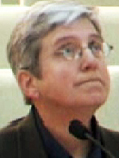
 THE BOONVILLE HOTEL is celebrating its 25th anniversary under the successful management of Johnny Schmitt. The beneficiary of many remodels and cosmetic enhancements under both Schmitt and his predecessors, the stately 19th century institution offers reasonably priced rooms with an absolutely first-class dining room. Frank James, Jesse James’ brother, once stayed at the Boonville Hotel and, late on a foggy night in the middle of a wintry week the old place fairly sings what it has seen over its 150 years, and it’s seen a lot.
THE BOONVILLE HOTEL is celebrating its 25th anniversary under the successful management of Johnny Schmitt. The beneficiary of many remodels and cosmetic enhancements under both Schmitt and his predecessors, the stately 19th century institution offers reasonably priced rooms with an absolutely first-class dining room. Frank James, Jesse James’ brother, once stayed at the Boonville Hotel and, late on a foggy night in the middle of a wintry week the old place fairly sings what it has seen over its 150 years, and it’s seen a lot. TOM ALLMAN is already running for a third term as Sheriff. Writing on his Facebook page (Yes, the County Sheriff has a facebook page) Sheriff Allman writes: “Hey Hey Hey! Don’t forget to block off Saturday, July 13th, 2013 for a great party in Willits. It is the kick off to my re-election. The band is booked, the food is taken care of, and now we are just waiting for the day to get here! Send me a private post with your address if you have not received an invitation. It will be at the Willits Community Center. Waylon and the Wildcats will be rockin’ the place and we would love to see you there. If you have not had a chance to hear Waylon and The Wildcats, you will not be disappointed. They are great! Tri-tip dinner, a great live band and a bunch of friendly folks will be there. $49.00 per person and a local motel has offered a great rate for out of towners. Hope you can make it! —Tom”
TOM ALLMAN is already running for a third term as Sheriff. Writing on his Facebook page (Yes, the County Sheriff has a facebook page) Sheriff Allman writes: “Hey Hey Hey! Don’t forget to block off Saturday, July 13th, 2013 for a great party in Willits. It is the kick off to my re-election. The band is booked, the food is taken care of, and now we are just waiting for the day to get here! Send me a private post with your address if you have not received an invitation. It will be at the Willits Community Center. Waylon and the Wildcats will be rockin’ the place and we would love to see you there. If you have not had a chance to hear Waylon and The Wildcats, you will not be disappointed. They are great! Tri-tip dinner, a great live band and a bunch of friendly folks will be there. $49.00 per person and a local motel has offered a great rate for out of towners. Hope you can make it! —Tom” (Dominiak, White, Joaquin, Cook)
(Dominiak, White, Joaquin, Cook) CHRISTOPHER LASCH could have used Mendocino County as a study population for his pivotal “Culture of Narcissism” where narcissists comprise the majority of our population. In another of his books, I forget which, probably “The Revolt of the Elites,” I wrote down the following:
CHRISTOPHER LASCH could have used Mendocino County as a study population for his pivotal “Culture of Narcissism” where narcissists comprise the majority of our population. In another of his books, I forget which, probably “The Revolt of the Elites,” I wrote down the following:
 The engineer said that
clay, especially, can make quite a tough base depending on the thickness of it. He
also said that the footings for the Bay Bridge are in what he called
“thick bay mud” and are not anchored on bedrock, but are still stable in
conjunction with the rest of the bridge. The engineer added that in
some ways the “friction” approach to pier support will help the
superstructure be flexible in an earthquake where stiffness is the enemy.
He said construction techniques can also minimize
settlement, especially test drillings and pile driving on the first pier
can help determine how far down the piles have to go, although each pier
might have to be different depending on what’s underneath. However, the
engineer agreed that there might well be uneven settling and other unknown
construction difficulties associated with unstable ground which “can
probably be solved with enough money.” But is there “enough money”? Time
will tell. If the usual overruns occur, other non-construction
parts of the project might have to be sacrificed for cost reasons, and if the
overruns are even bigger, the job could stall out part way through. (—ms)
The engineer said that
clay, especially, can make quite a tough base depending on the thickness of it. He
also said that the footings for the Bay Bridge are in what he called
“thick bay mud” and are not anchored on bedrock, but are still stable in
conjunction with the rest of the bridge. The engineer added that in
some ways the “friction” approach to pier support will help the
superstructure be flexible in an earthquake where stiffness is the enemy.
He said construction techniques can also minimize
settlement, especially test drillings and pile driving on the first pier
can help determine how far down the piles have to go, although each pier
might have to be different depending on what’s underneath. However, the
engineer agreed that there might well be uneven settling and other unknown
construction difficulties associated with unstable ground which “can
probably be solved with enough money.” But is there “enough money”? Time
will tell. If the usual overruns occur, other non-construction
parts of the project might have to be sacrificed for cost reasons, and if the
overruns are even bigger, the job could stall out part way through. (—ms) California’s Gold Rush may have ended well over a century and a half ago, but there are new prospectors in town and these suits aren’t toting tattered tents and rusty old pans. Instead the new Golden State pioneers employ geologists and lease expensive extraction equipment. Yet, in many ways it is still the Wild West out here in the land of sun and sea, and many are hoping to strike it rich.
California’s Gold Rush may have ended well over a century and a half ago, but there are new prospectors in town and these suits aren’t toting tattered tents and rusty old pans. Instead the new Golden State pioneers employ geologists and lease expensive extraction equipment. Yet, in many ways it is still the Wild West out here in the land of sun and sea, and many are hoping to strike it rich. I LOVED the two phrases: “Nutraloaf is usually bland, perhaps even unpleasant….” The only way you could un-bland and un-unpleasant this uniquely unappetizing glop is to kick it down the road a hundred yards, get your dog to whiz on it, dip it in used motor oil, and leave it out in the sun for a couple of years. Really, the Donner Party would have thrown this stuff back out into the snow. But then at the ball game the other day I watched four women old enough to know better eat those big, dry ball park pretzels dipped in mustard. Given the choice I’d go for Nutraloaf.
I LOVED the two phrases: “Nutraloaf is usually bland, perhaps even unpleasant….” The only way you could un-bland and un-unpleasant this uniquely unappetizing glop is to kick it down the road a hundred yards, get your dog to whiz on it, dip it in used motor oil, and leave it out in the sun for a couple of years. Really, the Donner Party would have thrown this stuff back out into the snow. But then at the ball game the other day I watched four women old enough to know better eat those big, dry ball park pretzels dipped in mustard. Given the choice I’d go for Nutraloaf.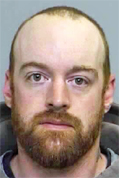
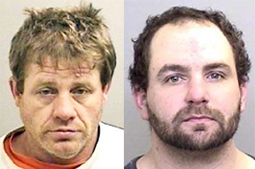
 * * *
* * *



 SUPERVISOR HAMBURG has filed a damages claim against the County of Mendocino. The Supervisor and his attorney aren’t talking, and County Counsel Tom Parker will only confirm that the claim has been filed, but won’t reveal its particulars. Since it’s clearly public domain, the public has a right to know what the claim is for. We should know by tomorrow, but preliminarily we think it’s probably to get the County to pay Hamburg’s legal bills. By the time this thing is settled, the supervisor’s lawyer fees could be considerable.
SUPERVISOR HAMBURG has filed a damages claim against the County of Mendocino. The Supervisor and his attorney aren’t talking, and County Counsel Tom Parker will only confirm that the claim has been filed, but won’t reveal its particulars. Since it’s clearly public domain, the public has a right to know what the claim is for. We should know by tomorrow, but preliminarily we think it’s probably to get the County to pay Hamburg’s legal bills. By the time this thing is settled, the supervisor’s lawyer fees could be considerable. RECOMMENDED VIEWING: “We Steal Secrets: The Story of Wikileaks.” This fine documentary film told me more than I needed to know about the personal lives of these two great heroes of global transparency, Bradley Manning and Julian Assange, the two men who have brought down governments simply by revealing the crimes of these governments against their own people. And nothing they revealed about the murderous imperialism of our own government and our allies came as any surprise to most of us lib-labs, and most of us loath the subsequent persecution of both men, especially that of Manning who was held for nearly a year incommunicado in a Marine Corps brig and whose trial for treason began this week. He’ll never get out, and might even be executed if the psychos in our government have their way. Assange, the film tells us, has had major fallings out with several of his closest associates, by whom he feels betrayed, but whose betrayals Assange is unable to articulate. Those associates complain that he’s become impossibly secretive, thus negating his entire life’s purpose, which has been No Secrets. For me, the most interesting moments of the film, which seemed to me to dwell a little too much on Manning’s sexual confusion, were the interviews with the two women who have famously accused Assange of sexually violating them. They have been universally reviled as everything from prostitutes to CIA lures, and their lives have been repeatedly threatened. But they aren’t undercover doxies. Or even doxies. They are everyday liberal women who admired Assange and his work and genuinely liked him. But Assange apparently forced one into unprotected sex and with the other he seems to have deliberately torn the prophylactic. The film says he has four children stashed around the world, implying that Assange may have some weird compulsion to reproduce beyond the usual bourgie 2.2 children. Neither woman felt much like pursuing the guy but word got out, the Swedish police demanded statements from them, the media went crazy and, of course, the Building 7 brigades screamed “Frame-up” while the Fox News yobbos had already been demanding straight-up assassination of both Manning and Assange. The lives of the two women were destroyed as the tabloids printed their photos and even their home addresses. The film is by Alex Gibney who made the great “Enron: The Smartest Guys in the Room.” He’s done an honest job in “We Steal Secrets” but, of course, he’s already being reviled from every political direction and the film has only been out for a week. The audience I saw it with last Saturday at the Embarcadero Theater in San Francisco seemed more nonplussed than anything. I’m sure we’d all arrived with preconceived ideas about Manning and Assange, and the venue being Frisco those ideas would be overwhelmingly favorable. Nothing I learned at all diminished my admiration for them as political martyrs, but Assange comes across as pretty creepy.
RECOMMENDED VIEWING: “We Steal Secrets: The Story of Wikileaks.” This fine documentary film told me more than I needed to know about the personal lives of these two great heroes of global transparency, Bradley Manning and Julian Assange, the two men who have brought down governments simply by revealing the crimes of these governments against their own people. And nothing they revealed about the murderous imperialism of our own government and our allies came as any surprise to most of us lib-labs, and most of us loath the subsequent persecution of both men, especially that of Manning who was held for nearly a year incommunicado in a Marine Corps brig and whose trial for treason began this week. He’ll never get out, and might even be executed if the psychos in our government have their way. Assange, the film tells us, has had major fallings out with several of his closest associates, by whom he feels betrayed, but whose betrayals Assange is unable to articulate. Those associates complain that he’s become impossibly secretive, thus negating his entire life’s purpose, which has been No Secrets. For me, the most interesting moments of the film, which seemed to me to dwell a little too much on Manning’s sexual confusion, were the interviews with the two women who have famously accused Assange of sexually violating them. They have been universally reviled as everything from prostitutes to CIA lures, and their lives have been repeatedly threatened. But they aren’t undercover doxies. Or even doxies. They are everyday liberal women who admired Assange and his work and genuinely liked him. But Assange apparently forced one into unprotected sex and with the other he seems to have deliberately torn the prophylactic. The film says he has four children stashed around the world, implying that Assange may have some weird compulsion to reproduce beyond the usual bourgie 2.2 children. Neither woman felt much like pursuing the guy but word got out, the Swedish police demanded statements from them, the media went crazy and, of course, the Building 7 brigades screamed “Frame-up” while the Fox News yobbos had already been demanding straight-up assassination of both Manning and Assange. The lives of the two women were destroyed as the tabloids printed their photos and even their home addresses. The film is by Alex Gibney who made the great “Enron: The Smartest Guys in the Room.” He’s done an honest job in “We Steal Secrets” but, of course, he’s already being reviled from every political direction and the film has only been out for a week. The audience I saw it with last Saturday at the Embarcadero Theater in San Francisco seemed more nonplussed than anything. I’m sure we’d all arrived with preconceived ideas about Manning and Assange, and the venue being Frisco those ideas would be overwhelmingly favorable. Nothing I learned at all diminished my admiration for them as political martyrs, but Assange comes across as pretty creepy.



 “Hey, Bruce: Please accept this potent, blooming marijuana plant as a gift from a fan of the old school of combative journalism, but a donor who wishes to remain anonymous. It has the potential to inseminate every outdoor female marijuana plant within the radius of ten miles, at least, depending upon the prevailing winds. I encourage you to grow it in your garden. Properly nourished and cared for, cannabis can become a perennial. In West Virginia there are stands of it that are 14-18 feet high, some stalks being over twenty inches in diameter. If the local dopester/gangsta/hats-on-backwards crowd flatten your tires, or threaten to cut your beloved male marijuana plant down, whining that you are ‘ruining’ their crops by turning their sensemilla (sic) into seed-bushes, you can fight back and inform your readers that you are doing the locals a favor — seeded weed is better for you if you put it in a blender and eat it than if you smoke it! Besides, scads of these 215-ers are — let’s tell it like it is — lazy lotus eaters who should get real jobs. Hemp liberation will not be accomplished until the Eel and the Navarro and the Russian River banks are covered with hemp. GROW IT! Signed Anonymous.”
“Hey, Bruce: Please accept this potent, blooming marijuana plant as a gift from a fan of the old school of combative journalism, but a donor who wishes to remain anonymous. It has the potential to inseminate every outdoor female marijuana plant within the radius of ten miles, at least, depending upon the prevailing winds. I encourage you to grow it in your garden. Properly nourished and cared for, cannabis can become a perennial. In West Virginia there are stands of it that are 14-18 feet high, some stalks being over twenty inches in diameter. If the local dopester/gangsta/hats-on-backwards crowd flatten your tires, or threaten to cut your beloved male marijuana plant down, whining that you are ‘ruining’ their crops by turning their sensemilla (sic) into seed-bushes, you can fight back and inform your readers that you are doing the locals a favor — seeded weed is better for you if you put it in a blender and eat it than if you smoke it! Besides, scads of these 215-ers are — let’s tell it like it is — lazy lotus eaters who should get real jobs. Hemp liberation will not be accomplished until the Eel and the Navarro and the Russian River banks are covered with hemp. GROW IT! Signed Anonymous.”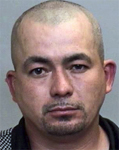
 ANOTHER ARGUMENT for the new Courthouse emphasized by the rubes is handicapped access. “O the poor dears. They have such a terrible time getting up to the courtrooms upstairs.” As if lifting a wheelchair-bound person up to the third floor of the present building is completely beyond all known engineering abilities.
ANOTHER ARGUMENT for the new Courthouse emphasized by the rubes is handicapped access. “O the poor dears. They have such a terrible time getting up to the courtrooms upstairs.” As if lifting a wheelchair-bound person up to the third floor of the present building is completely beyond all known engineering abilities.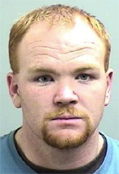
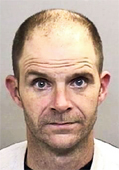

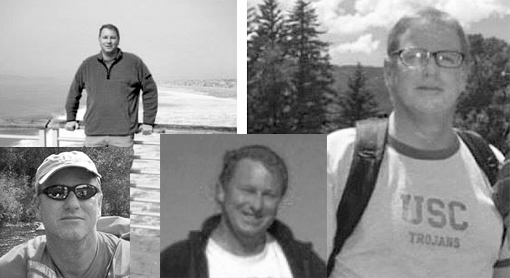

 ON MONDAY, JUNE 10, from 7-9pm two of the most articulate opponents of the Willits Bypass will take their roadshow to the Boonville Firehouse in downtown Boonville with a presentation called “In Defense of Little Lake Valley: Stories From The Campaign to Stop The Caltrans Bypass.” Scheduled guests are Amanda “Warbler” Senseman, AVA contributor and Bypass protester/tree sitter Will Parrish, plus a showing of the fine local documentary “How Caltrans Sold the Willits Bypass.” Will Parrish writes, “In Willits, the California Department of Transportation is in the process of paving paradise to put up an unnecessary freeway. It is arguably the most destructive development project to occur in Mendocino County in decades. It would cost more than $300 million and destroy the largest area of wetlands of any Northern California project in the past half-century, while doing remarkably little to alleviate in-town traffic congestion. Learn about the Bypass from people who have been on the frontlines working to stop it, and also learn how you can be involved.” (Sponsored by: Little Lake Valley Defenders.)
ON MONDAY, JUNE 10, from 7-9pm two of the most articulate opponents of the Willits Bypass will take their roadshow to the Boonville Firehouse in downtown Boonville with a presentation called “In Defense of Little Lake Valley: Stories From The Campaign to Stop The Caltrans Bypass.” Scheduled guests are Amanda “Warbler” Senseman, AVA contributor and Bypass protester/tree sitter Will Parrish, plus a showing of the fine local documentary “How Caltrans Sold the Willits Bypass.” Will Parrish writes, “In Willits, the California Department of Transportation is in the process of paving paradise to put up an unnecessary freeway. It is arguably the most destructive development project to occur in Mendocino County in decades. It would cost more than $300 million and destroy the largest area of wetlands of any Northern California project in the past half-century, while doing remarkably little to alleviate in-town traffic congestion. Learn about the Bypass from people who have been on the frontlines working to stop it, and also learn how you can be involved.” (Sponsored by: Little Lake Valley Defenders.) ========================================================
========================================================
 ========================================================
========================================================
 COMING FROM the incoherent country of America where town and country have become inseparable, the towns slurbing every which way, Scotland is a revelation. Town is town, country is country, and town ends and country begins with strict borders between the two. Leaving Edinburgh’s airport and driving to my ancestral beginnings at Selkirk, a beautiful little place on a hillside, we were immediately in sheep country whose pastures were neatly marked off by ancient stone walls. Traffic was light, then non-existent when we turned off to the series of one-lane side roads that led eventually to Hoscote House where 17 of us are staying. The Mendo equivalent would be to drive to the very end of Spy Rock, ford the Eel, then drive up into the hills of Covelo, the difference being that Scotland is a much less menacing place than rural America. We even drove through a streambed at one point, making our slow way through scattering sheep and small herds of long-haired red cattle. But we didn’t get into the deep boons until after Selkirk, population 8,000 and the site of Scotland’s first king, a fine fellow by the name of Wallace who’d managed to unite the country’s medieval warring tribes, descendants of the men who’d shed their kilts, painted their balls blue, and came running out at the Romans with broad axes. The Romans enjoyed a good laugh and then cut the blue balled savages down like so many weeds. Five hundred years after the birth of Christ, and after centuries of fending off raiding parties of various nationalities and fighting constantly among themselves, Wallace got these primitive warrior clans united and re-oriented to fight the English by whom he was eventually captured, taken to London and dragged through the streets. To make sure he was dead the Brits pulled him apart, drawing and quartering as it was called. Many Americans, including me, are descended from these Scots. When the lords grabbed off miles of pasture for themselves early in the 19th century, they rounded us up and packed us off to Appalachia. My grandfather, though, made his way from Selkirk to, of all places, Honolulu, where the world’s most uptight persons, the Scots Presbyterians, were proselytizing the world’s least uptight persons, the Hawaiians. Grandad was there primarily to make money but did both. He didn’t think women should wear make-up, and everyone should spend all day Sunday in church. I met elderly people who remembered him. I remember him for rapping my knuckles with a heavy bread knife when I made an unmannerly reach across the dinner table. Locals these days seem free of the old strictures but they still commemorate ancient battles, and as one said, “These hills are all soaked in blood.” I hiked long and hard to an old Roman mile marker deep in the hills where I tried to imagine their route this far north and on into England. On some initial expeditions they marched on through on elephants accompanied by regiments of African warriors, both the elephants and Africans dumbfounding the Scots. To a Californian, 1850 is ancient history. To these people it’s yesterday. I was assured by a friend that “the scones in Scotland are the real thing, the best you’ll ever have.” Well, they invented the things and one would think. But on Day Three of this adventure the scones I’ve tried are so far inferior to the scones of Boonville I’m tempted to mail some Selkirk scones to my informant to show him how wrong he is. We could learn from these people, though. Selkirk, directly on the Scottish tourist path, maintains a public bathroom complete with an on-site attendant. It’s scrupulously clean and comes with changing rooms for families travelling with infants. The towns I’ve seen are deceptively prosperous-looking but unemployment rates exceed twenty percent and many of the shops appear to be struggling. No street people, crazed or otherwise, and every little town with a stream of any size has a streamside walk, and every little town a museum. It’s in the low 70s here, a veritable heat wave people say. The balmy days inspire some people to strip to their skivvies and sunbathe stretched out beside the road. I walked around a bend in a remote road to encounter a couple waxing their car. It would have been impertinent to ask why drive miles from the nearest town to spiff up the transportation.
COMING FROM the incoherent country of America where town and country have become inseparable, the towns slurbing every which way, Scotland is a revelation. Town is town, country is country, and town ends and country begins with strict borders between the two. Leaving Edinburgh’s airport and driving to my ancestral beginnings at Selkirk, a beautiful little place on a hillside, we were immediately in sheep country whose pastures were neatly marked off by ancient stone walls. Traffic was light, then non-existent when we turned off to the series of one-lane side roads that led eventually to Hoscote House where 17 of us are staying. The Mendo equivalent would be to drive to the very end of Spy Rock, ford the Eel, then drive up into the hills of Covelo, the difference being that Scotland is a much less menacing place than rural America. We even drove through a streambed at one point, making our slow way through scattering sheep and small herds of long-haired red cattle. But we didn’t get into the deep boons until after Selkirk, population 8,000 and the site of Scotland’s first king, a fine fellow by the name of Wallace who’d managed to unite the country’s medieval warring tribes, descendants of the men who’d shed their kilts, painted their balls blue, and came running out at the Romans with broad axes. The Romans enjoyed a good laugh and then cut the blue balled savages down like so many weeds. Five hundred years after the birth of Christ, and after centuries of fending off raiding parties of various nationalities and fighting constantly among themselves, Wallace got these primitive warrior clans united and re-oriented to fight the English by whom he was eventually captured, taken to London and dragged through the streets. To make sure he was dead the Brits pulled him apart, drawing and quartering as it was called. Many Americans, including me, are descended from these Scots. When the lords grabbed off miles of pasture for themselves early in the 19th century, they rounded us up and packed us off to Appalachia. My grandfather, though, made his way from Selkirk to, of all places, Honolulu, where the world’s most uptight persons, the Scots Presbyterians, were proselytizing the world’s least uptight persons, the Hawaiians. Grandad was there primarily to make money but did both. He didn’t think women should wear make-up, and everyone should spend all day Sunday in church. I met elderly people who remembered him. I remember him for rapping my knuckles with a heavy bread knife when I made an unmannerly reach across the dinner table. Locals these days seem free of the old strictures but they still commemorate ancient battles, and as one said, “These hills are all soaked in blood.” I hiked long and hard to an old Roman mile marker deep in the hills where I tried to imagine their route this far north and on into England. On some initial expeditions they marched on through on elephants accompanied by regiments of African warriors, both the elephants and Africans dumbfounding the Scots. To a Californian, 1850 is ancient history. To these people it’s yesterday. I was assured by a friend that “the scones in Scotland are the real thing, the best you’ll ever have.” Well, they invented the things and one would think. But on Day Three of this adventure the scones I’ve tried are so far inferior to the scones of Boonville I’m tempted to mail some Selkirk scones to my informant to show him how wrong he is. We could learn from these people, though. Selkirk, directly on the Scottish tourist path, maintains a public bathroom complete with an on-site attendant. It’s scrupulously clean and comes with changing rooms for families travelling with infants. The towns I’ve seen are deceptively prosperous-looking but unemployment rates exceed twenty percent and many of the shops appear to be struggling. No street people, crazed or otherwise, and every little town with a stream of any size has a streamside walk, and every little town a museum. It’s in the low 70s here, a veritable heat wave people say. The balmy days inspire some people to strip to their skivvies and sunbathe stretched out beside the road. I walked around a bend in a remote road to encounter a couple waxing their car. It would have been impertinent to ask why drive miles from the nearest town to spiff up the transportation.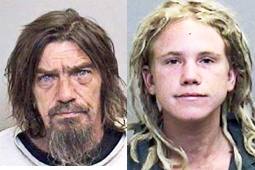

 ========================================================
======================================================== * * *
* * * SO THIS IS CIVILIZATION. Spent a day in Edinburgh, concluding that if Americans were still teachable we could learn how to manage cities from the Scots. For example, the center of San Francisco — and let’s call the center of our fairest large town the cable car turnaround at Powell and Market — is a medieval spectacle of drunks, drug addicts, cruising criminals, and the unsequestered insane. At Edinburgh’s civic center a nexus of bus, cab, train, restaurants, and coffee shops in the shadow of the magnificent castle, I counted exactly four bums in as many blocks, three of whom presented neatly printed messages asking for money. With a merry hands-across-the-waters, “Here ya go, pal,” I dropped some coins onto one man’s handkerchief-sized cloth, realizing too late I’d gifted him to the tune of about five bucks because I haven’t mastered the money here. “I’ll be fooked,” the bum exclaimed through a toothless grin. “A fookin’ Yank!” There were no visible lurks of the ubiquitous type menacing the public areas of every city and town of any size in America, and a national health service that treats crazy people rather than freeing them to die on the streets. Of course a national health care system is “socialism,” and we can’t have that, can we?
SO THIS IS CIVILIZATION. Spent a day in Edinburgh, concluding that if Americans were still teachable we could learn how to manage cities from the Scots. For example, the center of San Francisco — and let’s call the center of our fairest large town the cable car turnaround at Powell and Market — is a medieval spectacle of drunks, drug addicts, cruising criminals, and the unsequestered insane. At Edinburgh’s civic center a nexus of bus, cab, train, restaurants, and coffee shops in the shadow of the magnificent castle, I counted exactly four bums in as many blocks, three of whom presented neatly printed messages asking for money. With a merry hands-across-the-waters, “Here ya go, pal,” I dropped some coins onto one man’s handkerchief-sized cloth, realizing too late I’d gifted him to the tune of about five bucks because I haven’t mastered the money here. “I’ll be fooked,” the bum exclaimed through a toothless grin. “A fookin’ Yank!” There were no visible lurks of the ubiquitous type menacing the public areas of every city and town of any size in America, and a national health service that treats crazy people rather than freeing them to die on the streets. Of course a national health care system is “socialism,” and we can’t have that, can we? THIS POEM was engraved on the plinth honoring the Scots who fought in Spain:
THIS POEM was engraved on the plinth honoring the Scots who fought in Spain: On June 7, 2013, at about 6:57pm, Deputies from the Mendocino County Sheriff’s Office were dispatched to the 700 block of Port Road in Point Arena for a reported domestic related dispute. Deputies also received information that the involved parties were associated with a newer black Ford Mustang. While responding to the location, Deputies observed a vehicle leaving the area that matched the provided description. Deputies initiated an investigative traffic stop on the vehicle and made contact with the two occupants. Both occupants readily admitted to being cohabitating partners and the involved parties of the reported dispute. Deputies observed that the adult male had a visible injury to his arm and observed that the female, Christina Nuchols, 36, of Glenhaven, California, was intoxicated. Deputies were able to determine, by speaking to both parties, that Nuchols scratched the male during the alcohol related argument and caused the observed injuries to the male. Nuchols was subsequently arrested and transported to the Mendocino County Jail where she was booked on the open charge of Domestic Violence Battery and held in lieu of $25,000.00 bail. Nuchols was also booked on two active arrest warrants issued out of Colusa County. Nuchols had a $25,000 bail felony warrant for possession of a controlled substance and a $10,000 bail misdemeanor warrant for being under the influence of a controlled substance.
On June 7, 2013, at about 6:57pm, Deputies from the Mendocino County Sheriff’s Office were dispatched to the 700 block of Port Road in Point Arena for a reported domestic related dispute. Deputies also received information that the involved parties were associated with a newer black Ford Mustang. While responding to the location, Deputies observed a vehicle leaving the area that matched the provided description. Deputies initiated an investigative traffic stop on the vehicle and made contact with the two occupants. Both occupants readily admitted to being cohabitating partners and the involved parties of the reported dispute. Deputies observed that the adult male had a visible injury to his arm and observed that the female, Christina Nuchols, 36, of Glenhaven, California, was intoxicated. Deputies were able to determine, by speaking to both parties, that Nuchols scratched the male during the alcohol related argument and caused the observed injuries to the male. Nuchols was subsequently arrested and transported to the Mendocino County Jail where she was booked on the open charge of Domestic Violence Battery and held in lieu of $25,000.00 bail. Nuchols was also booked on two active arrest warrants issued out of Colusa County. Nuchols had a $25,000 bail felony warrant for possession of a controlled substance and a $10,000 bail misdemeanor warrant for being under the influence of a controlled substance. On June 2, relatives of 46-year-old Yolanda Orozco went to the Burger King in Willits and ordered a few hamburgers.
On June 2, relatives of 46-year-old Yolanda Orozco went to the Burger King in Willits and ordered a few hamburgers.

 Selkirk’s warriors had joined an invasion of England under their last king, James, meeting the Brits at Flodden for a thorough defeat. Only one Selkirkian, a man named Fletcher, survived. He staggered back into town with Selkirk’s battle flag, waving it in slow, sad flourishes to silently explain the catastrophe to the townspeople. And then he dropped dead.
Selkirk’s warriors had joined an invasion of England under their last king, James, meeting the Brits at Flodden for a thorough defeat. Only one Selkirkian, a man named Fletcher, survived. He staggered back into town with Selkirk’s battle flag, waving it in slow, sad flourishes to silently explain the catastrophe to the townspeople. And then he dropped dead. It’s a great honor to be selected standard bearer as the population from miles around remembers the Battle of Flodden and recalls the days of the Commons patrols. In 1913, my grandfather was a standard bearer representing the Colonial Society, which is not a collection of nostalgic imperialists, but an association of men and women drawn from the vast Scots diaspora. Us returnees were acknowledged as exiles in a large ceremony featuring some witty speeches — “I won’t say why Mr. Anderson was exiled” — and quite moving songs celebrating the beauty of the town. This year, my nephew, Robert Mailer Anderson, was standard bearer, a tense responsibility that culminates with the complicated flag ritual in which the standard bearers, in multi-step, choreographed moves set to a single trumpet (I think), re-enact that single surviving warrior’s return from the Battle of Flodden more than 400 years ago.
It’s a great honor to be selected standard bearer as the population from miles around remembers the Battle of Flodden and recalls the days of the Commons patrols. In 1913, my grandfather was a standard bearer representing the Colonial Society, which is not a collection of nostalgic imperialists, but an association of men and women drawn from the vast Scots diaspora. Us returnees were acknowledged as exiles in a large ceremony featuring some witty speeches — “I won’t say why Mr. Anderson was exiled” — and quite moving songs celebrating the beauty of the town. This year, my nephew, Robert Mailer Anderson, was standard bearer, a tense responsibility that culminates with the complicated flag ritual in which the standard bearers, in multi-step, choreographed moves set to a single trumpet (I think), re-enact that single surviving warrior’s return from the Battle of Flodden more than 400 years ago.


 TODD WALTON’S great novel, Inside Moves, has been re-issued by Pharos Editions, “dedicated to bringing to light out-of-print, lost, or rare books of distinction.” Inside Moves is certainly a rare book of distinction, and Pharos didn’t have to beg another writer of distinction, Sherman Alexie, to write the introduction:
TODD WALTON’S great novel, Inside Moves, has been re-issued by Pharos Editions, “dedicated to bringing to light out-of-print, lost, or rare books of distinction.” Inside Moves is certainly a rare book of distinction, and Pharos didn’t have to beg another writer of distinction, Sherman Alexie, to write the introduction: